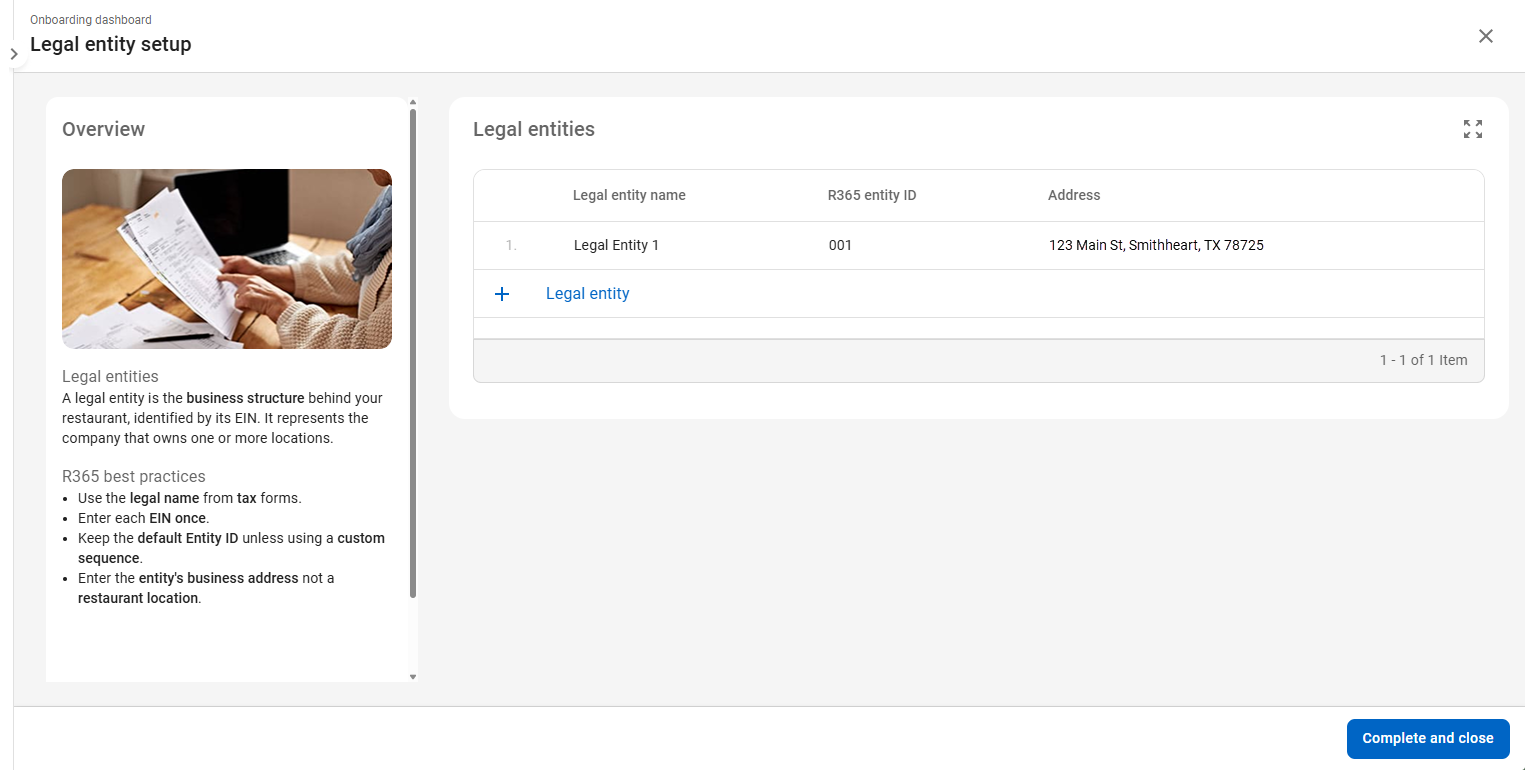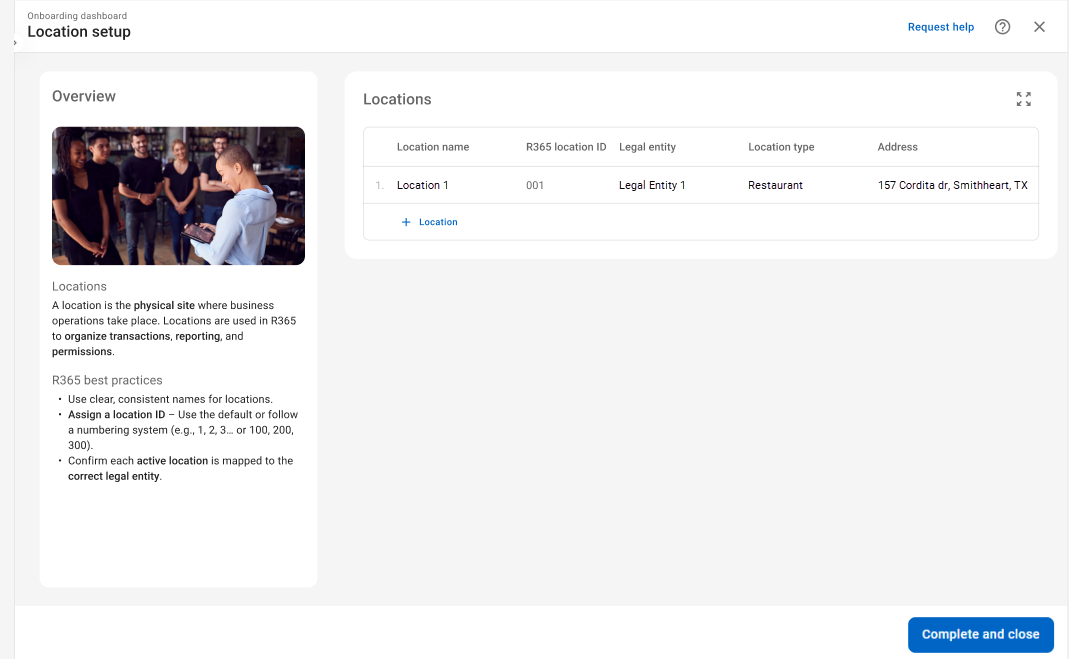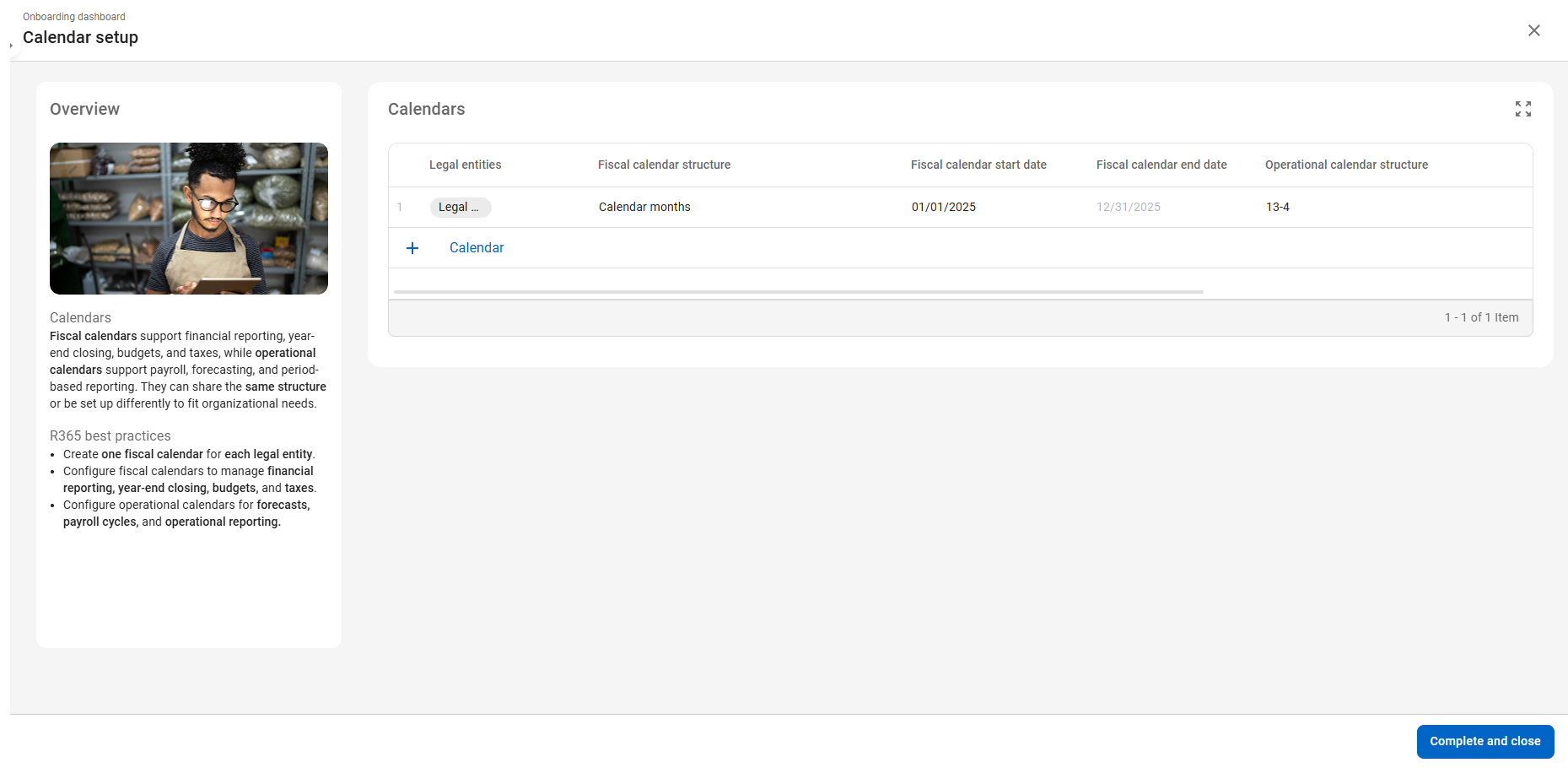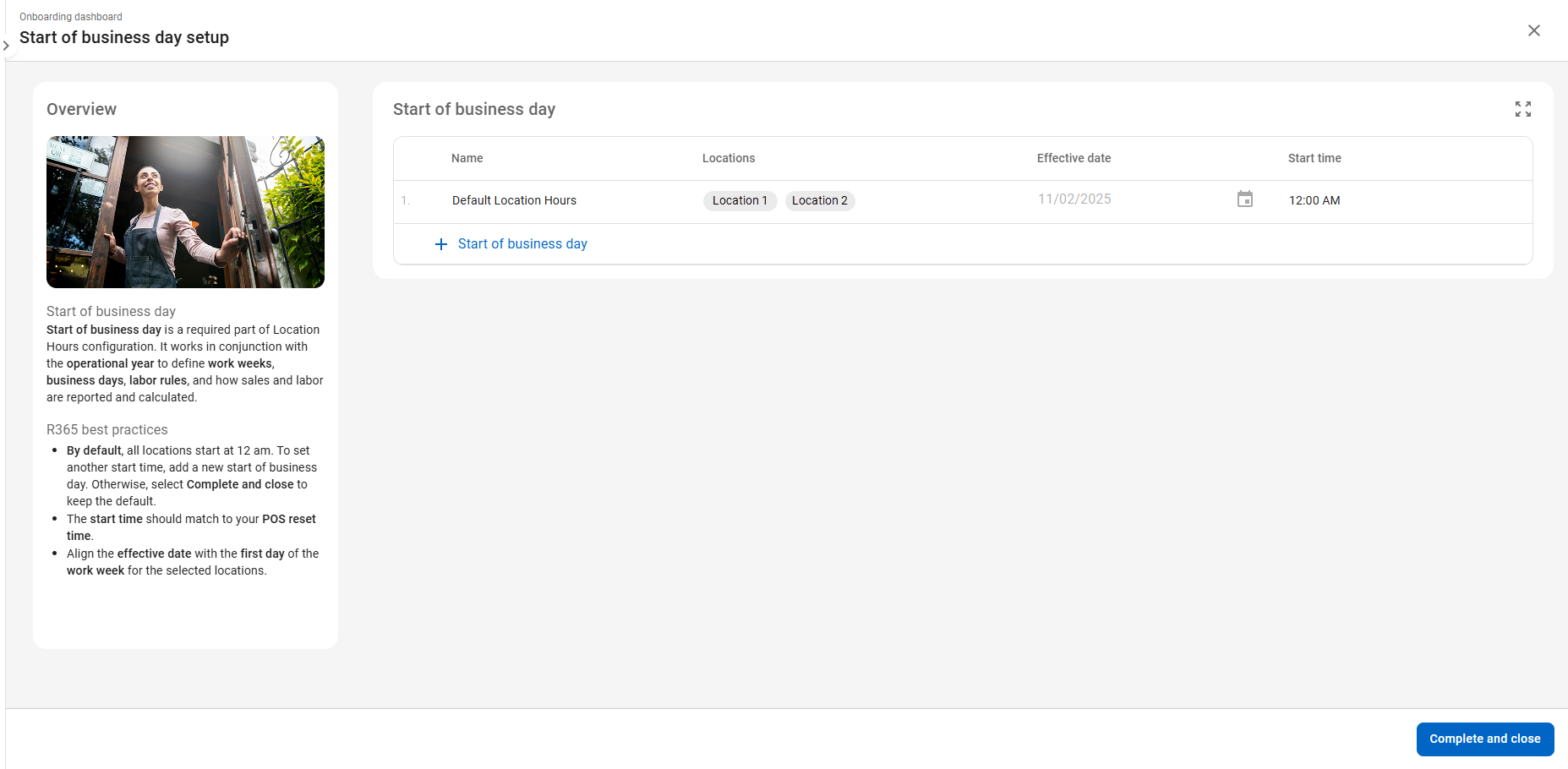The Onboarding Dashboard provides a guided workflow for setting up the core building blocks of R365. It brings the foundational setup steps into a single, focused experience so organizations can configure legal entities, locations, calendars, and start of business day in the correct order before going beginning onboarding with an Implementation Specialist.
The dashboard tracks progress across required steps, surfaces what is incomplete, and links directly into each setup experience (for example, Legal Entity Setup, Location Setup, and Calendar Setup). Once onboarding is complete, day-to-day work and edits shift to standard R365 pages.
Key Components of the Onboarding Dashboard
Legal entity setup

Legal Entity Setup creates the legal entities that own locations and financial activity. Each legal entity:
Holds its own balance sheet and supports independent financial reporting.
Represents a company, ownership group, or tax ID.
Provides the parent context for locations, calendars, and intercompany activity.
Responsibilities in this step include entering legal names, assigning R365 Entity IDs, and storing primary business addresses.
Once legal entity setup is complete, legal entities are managed from the Legal Entities page.
Location setup

Location Setup creates the operational units that represent restaurants, commissaries, or other operating sites. Each location:
Rolls up into a legal entity for financial reporting.
Drives sales, purchasing, inventory, labor, and scheduling activity.
Can be configured with specific settings such as location type and other operational attributes.
During onboarding, locations are defined at a high level so transactional setup (sales, AP, inventory, etc.) has a clear structure to attach to.
Once location setup is complete, locations are managed from the Locations page.
Calendar setup

Calendar Setup defines both fiscal and operational calendars for each legal entity. This step determines:
How fiscal years and periods are structured (for example, Calendar months, 4/4/5, 13/4).
How operational periods align with workweeks, payroll cycles, and forecasting.
Start and end dates for fiscal and operational years, which drive reporting and period-close activities.
Once calendar setup is complete, detailed period management is handled on the Fiscal Years and related pages.
Start of business day

The Onboarding Dashboard also includes Start of business day setup, which determines how daily activity is grouped. These settings:
Define when each location’s business day starts (for example, 12:00 am vs. 4:00 am).
Help align R365 with POS reset times so sales and labor post to the correct business day.
Support accurate operational reporting, forecasting, and labor/payroll alignment.
After onboarding, additional options are available on the Location Hours page.
More information: